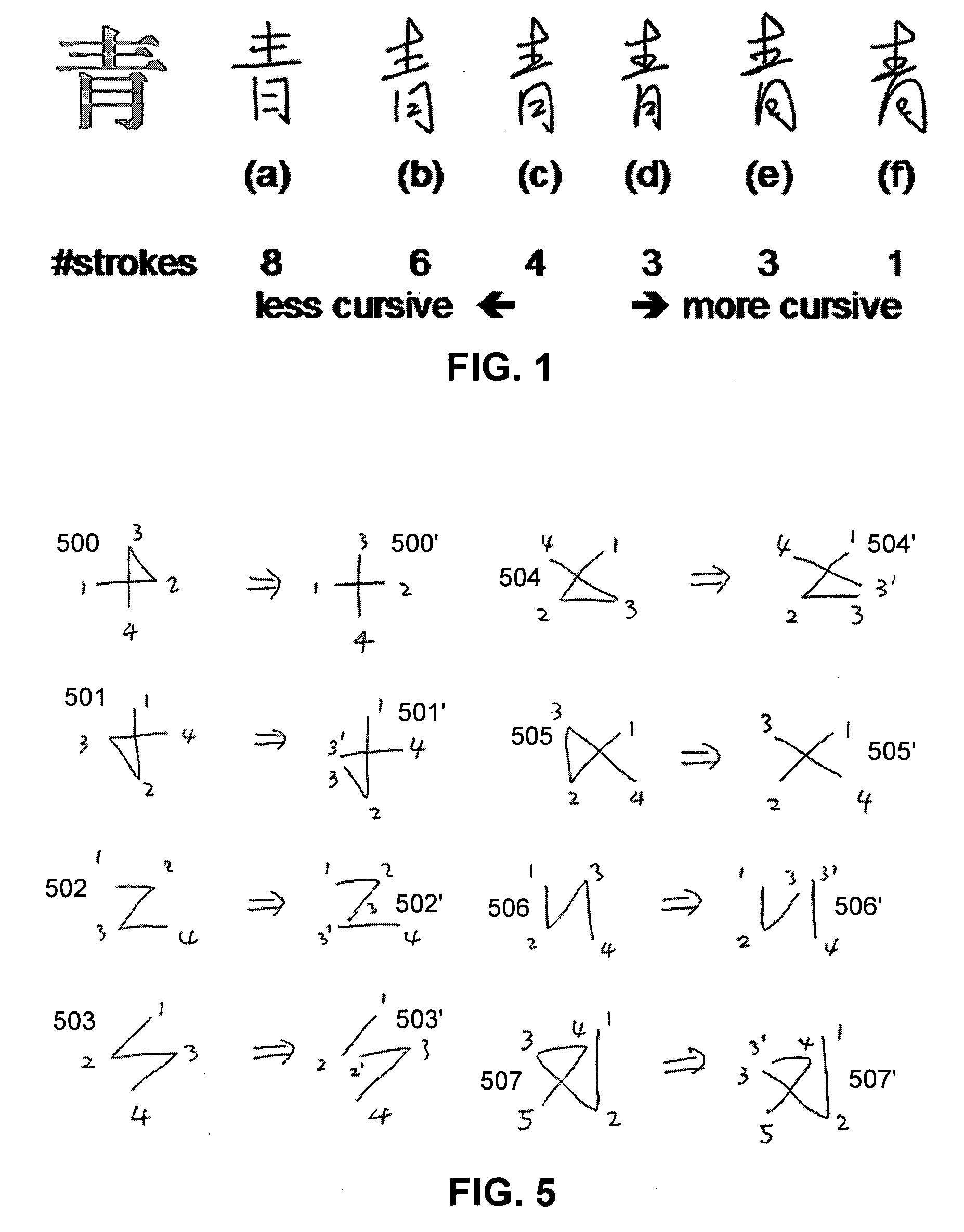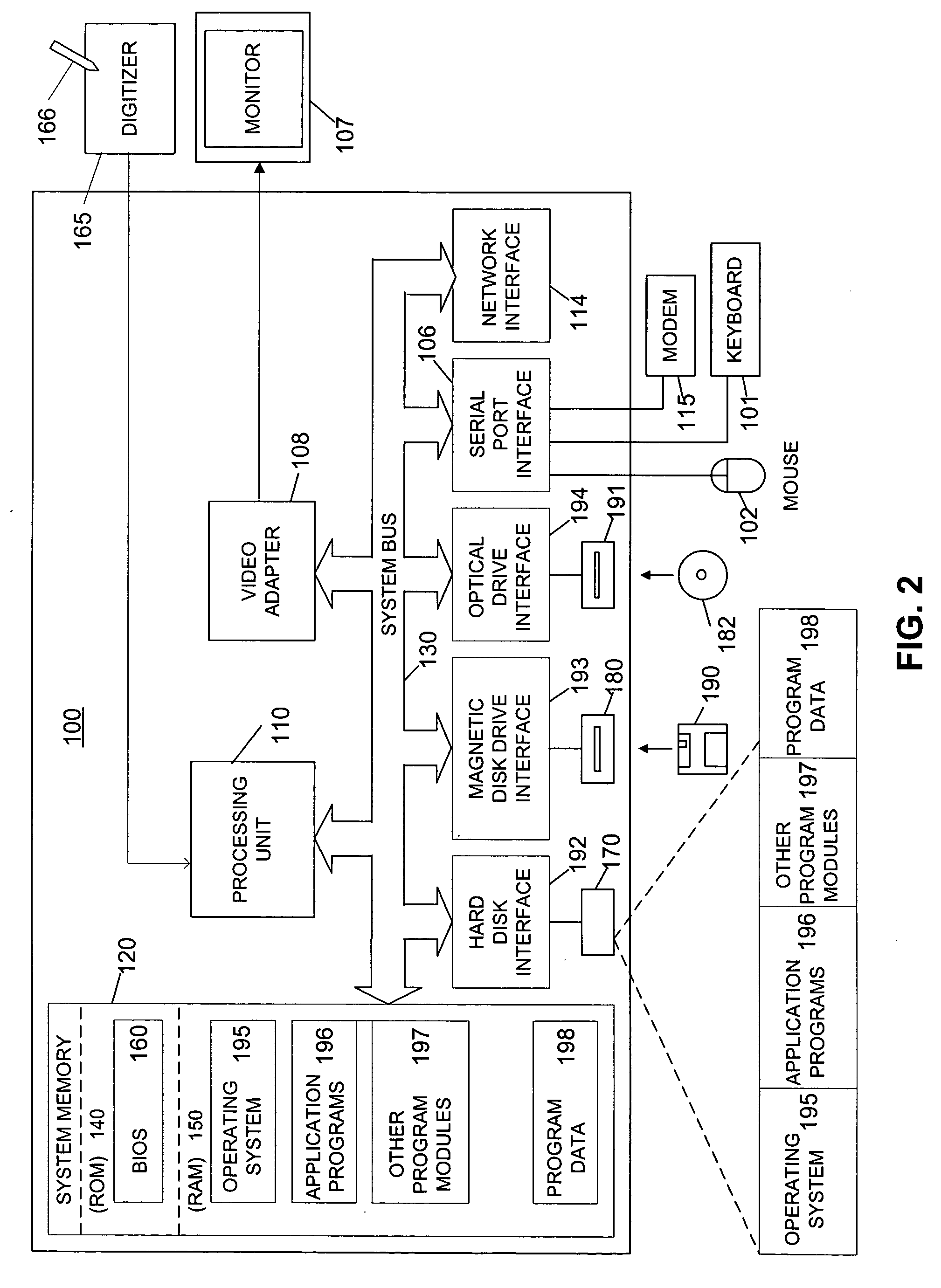Stroke segmentation for template-based cursive handwriting recognition
- Summary
- Abstract
- Description
- Claims
- Application Information
AI Technical Summary
Benefits of technology
Problems solved by technology
Method used
Image
Examples
Embodiment Construction
I. Terms
[0023] Unless otherwise specified, the following terms have the following meanings throughout this specification and the claims.
[0024]“Ink” or “electronic ink” refers to a sequence or a set of strokes with properties. The sequence of strokes may include strokes ordered, for example, by the time captured. Each stroke is comprised of a sequence of points, which may be represented using a variety of known techniques including Cartesian coordinates (X, Y), polar coordinates (r, Θ)), and other techniques.
[0025] A “stroke” refers to a sequence or set of captured points. For example, when rendered, the sequence of points may be connected with lines. Alternatively, the stroke may be represented as a point and a sequence of vectors in the direction of the next point. A stroke is intended to encompass any representation of points or segments relating to ink, irrespective of the underlying representation of points and / or what connects the points.
[0026] A “character” is generally a k...
PUM
 Login to View More
Login to View More Abstract
Description
Claims
Application Information
 Login to View More
Login to View More - R&D
- Intellectual Property
- Life Sciences
- Materials
- Tech Scout
- Unparalleled Data Quality
- Higher Quality Content
- 60% Fewer Hallucinations
Browse by: Latest US Patents, China's latest patents, Technical Efficacy Thesaurus, Application Domain, Technology Topic, Popular Technical Reports.
© 2025 PatSnap. All rights reserved.Legal|Privacy policy|Modern Slavery Act Transparency Statement|Sitemap|About US| Contact US: help@patsnap.com



